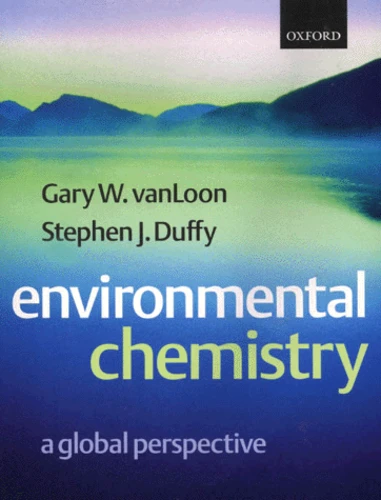Environmental chemistry. A global perspective
Par : ,Formats :
- Paiement en ligne :
- Livraison à domicile ou en point Mondial Relay indisponible
- Retrait Click and Collect en magasin gratuit
- Nombre de pages492
- PrésentationBroché
- Poids1.1 kg
- Dimensions18,8 cm × 24,5 cm × 2,8 cm
- ISBN0-19-856440-6
- EAN9780198564409
- Date de parution14/02/2000
- ÉditeurOxford University Press
Résumé
This is a comprehensive textbook for upper year university students which discusses the nature of heterogeneous systems in the natural environment. The links between and within the various environmental compartments-air, water, soil-are emphasized.
• Has the depth of chemistry needed to explain the basics of natural processes
• Contains enough breadth of material to present a well-rounded introduction to such systems
While the book focuses on basic knowledge and general principles, examples are taken from around the world.
The book describes the chemistry of natural systems, their composition and the processes and reactions that operate within and between the various compartments. Without focussing specifically on pollution, it also discusses ways in which these systems respond to perturbations, either those that are natural or those that are caused by humans. Background material from subjects such as atmospheric science, limnology, and soil science is provided in order to establish a setting for a description of the relevant chemistry. Emphasis is on general principles that can be applied in a variety of circumstances. At the same time, these principles are illustrated with examples taken from around the world. Because of issues of the environment related to every society, care has been taken to relate the subject material to situations in urban and rural areas in both highly industrialized and low-income countries.
In each chapter, the book:
• Features well-known environmental issues
• Provides worked examples and problems
• Teaches how to approach environ mental problems that go beyond the material presented in the book
This is a comprehensive textbook for upper year university students which discusses the nature of heterogeneous systems in the natural environment. The links between and within the various environmental compartments-air, water, soil-are emphasized.
• Has the depth of chemistry needed to explain the basics of natural processes
• Contains enough breadth of material to present a well-rounded introduction to such systems
While the book focuses on basic knowledge and general principles, examples are taken from around the world.
The book describes the chemistry of natural systems, their composition and the processes and reactions that operate within and between the various compartments. Without focussing specifically on pollution, it also discusses ways in which these systems respond to perturbations, either those that are natural or those that are caused by humans. Background material from subjects such as atmospheric science, limnology, and soil science is provided in order to establish a setting for a description of the relevant chemistry. Emphasis is on general principles that can be applied in a variety of circumstances. At the same time, these principles are illustrated with examples taken from around the world. Because of issues of the environment related to every society, care has been taken to relate the subject material to situations in urban and rural areas in both highly industrialized and low-income countries.
In each chapter, the book:
• Features well-known environmental issues
• Provides worked examples and problems
• Teaches how to approach environ mental problems that go beyond the material presented in the book

